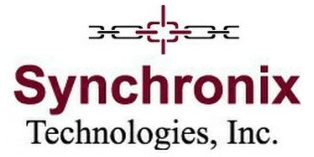Distribution Management Application of Theory of Constraints offers reduced inventory and greatly improved product availability
Theory of Constraints (TOC) formally lumps Distribution and Supply Chain Management together.
This is entirely logical from a “mechanical” perspective but I want to go beyond just the mechanics, so I’ll keep them separate because the TOC offers some very neat (and unique) twists to the Supply Chain environment.
At the pure Distribution level the classic problem has always been how much inventory to hold, of what, and where.
But there’s a dilemma.
The case for holding higher inventories in any of the potential locations is usually centered around providing higher service levels – to the next storage point, to the customer, or to the ultimate consumer.
The case for holding reduced inventories usually includes issues of “cost reduction” (carrying costs, storage costs, handling costs) and reduction of the volume of goods returned – especially in circumstances where product aging is an issue.
Other situation-specific issues usually make an appearance on this side of the equation, too.
Many companies, and especially larger ones, turn towards sophisticated answers – powerful forecasting models, distribution requirements planning software, EDI, and so on. A lot of time and money can be invested in these solutions, especially if they’re part of a larger conventional supply-chain solution.
Now, some forecasting might indeed be essential. (Although far less often, and of a different format, than most managers realize.)
And EDI can indeed be a valuable basis for sharing data. No argument there.
But the heart of the Theory of Constraints solution is a replenishment model – and not the conventional replenishment model that is often used within a “Lean” supply chain mechanism.
The TOC model supports a range of different distribution environments, from a VMI (Vendor Managed Inventory) situation where a TOC user replenishes a client’s inventory from capacity to what is more accurately considered a distribution environment where inventory is held at the TOC production site, at distribution centers, and downstream … perhaps even to point of sale.
But the replenishment mechanism itself is different from the increasingly common “JIT pull” supply chain flow; and a new concept takes the technology to new levels of effectiveness.
Mechanically, The TOC Distribution solution differs from the traditional and the “Lean” technique by providing for semi-automatic adjustments of inventory levels in line with actual consumption levels and also in line with other factors. The technique is always striving for low inventories … but constantly adjusting to ensure that there are no availability problems.
In fact, this approach is so effective that some Theory of Constraints users guarantee availability at pain of a cash penalty, while providing inventory reductions of 50% to 66%.
But there’s another element that comes into play – Buffer Management.
Buffer Management is a technique perfected within the TOC to achieve three goals.
- To make sure that availability at any point of time is extremely high.
- To communicate crystal-clear priorities to all involved in the distribution chain, from Plant through to the end of the supply chain.
- To capture and analyze data that supports continuous process improvement along the entire supply chain.
The results of the TOC Distribution solution are typically greatly reduced inventories throughout the system, combined with extraordinarily high levels of product availability.
Since 2005 there has been some very useful (and affordable) software available from different vendors to support the Distribution solution. We’ve worked with one of two packages we trust, and it’s allowed us to take the implementations to a new level. However, we’re looking forward to using a different package in our next implementation because it’s tightly integrated with Synchronous manufacturing, too.
So … that introduces the mechanical side of Distribution Management in a Theory of Constraints environment..
Next, the Supply Chain solution goes beyond mechanical aspects.
Or, Return home: Fast, massive performance improvements
